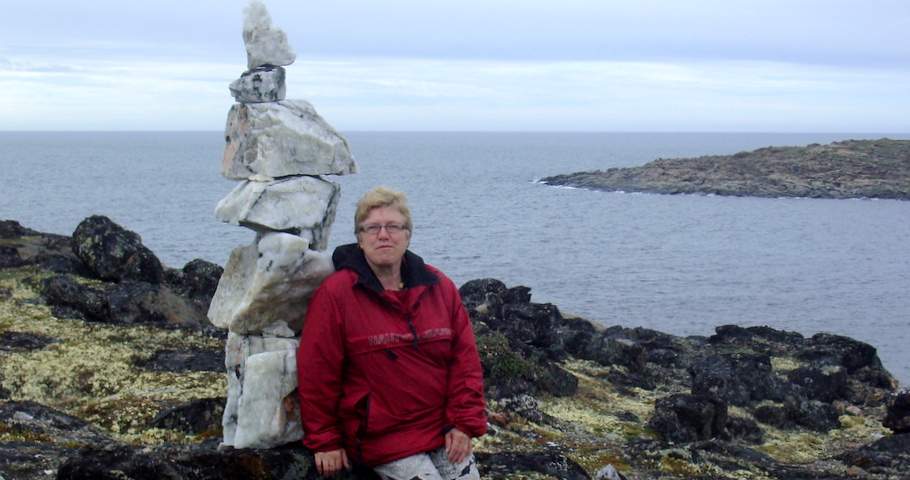At the heart of Inuit culture is the family
At the heart of Inuit culture is the family, which is itself at the centre of a vast network of social relations. Children are born and begin the long process of learning this network of social relationships that form the environment leading to their adulthood.Among Inuit, all children must go through different life stages and roles before having the recognition of being elders. In this way only, they acquire multiple know-how and thus contribute to the well-being of the family and the community.
The role of seniors in the community and in the family structure
The role of elders in the community and in the family structure has changed considerably since the arrival of non-Inuit. The way of life that non-Inuit would call nomadic was to change places from one season to another. However, year after year, each season tended to bring them back to the same place. For example, the Inuit used seasonal resources on family hunting grounds. Sharing was the central concern of Inuit, and there was good community harmony.Many Inuit elders have an enduring memory of this era when they lived in small groups. Before Inuit communities lived permanently in housing, the values, traditions, know-how, and knowledge that made up their culture were much different than they are today.
Nobody was the sole owner of the separate hunting areas. But the exploitation of the territory played a vital role in the identification of groups and the definition of social relations and rules of land use prevailing.
The Inuit territory of Canada is divided into four administrative regions
Today, the Inuit territory of Canada is divided into four administrative regions. Fifty-five different communities are now spread over a larger area than France. Each region is now developing its own definition of economic and social development, and a final agreement on land claims between regions is moving in this direction.The region north of the 55th parallel in Quebec is home to approximately 12,000 Inuit living in 14 coastal communities in Nunavik. More than 60% of the population is under 30 years old. The cost of living is at least double that of southern Quebec, if not more.
Traumatic milestones for the Inuit
In the case of the Nunavik Inuit, the creation of federal residential schools in the 1950s had major consequences, profound socio-economic changes and on their traditional values. The roles of men and women have literally been reversed. The transfer of Inuit to the High Arctic (parallel) by the federal government in 1953 and the slaughter of dogs in the 1950s and 1960s by the federal and Quebec police forces accelerated the transition from a semi-nomadic life to a life settling in communities. The break-up of families linked to those displacements has provoked other tragic events.Overcrowding leads to invisible homelessness
Nunavik has the highest rate of housing overcrowding in Canada. People are crowding into homes that are much too small. The homes are not meeting the demands of the sedentary lifestyle the Inuit did not choose. It is not unusual for 15 to 20 people to live in the same dwelling. As a result, there is a new phenomenon in Inuit communities: invisible homelessness. This homelessness brings a lot of problems, both physical and mental.The United Nations characterizes homelessness as "absolute" or "relative". In the North, homelessness is relative and refers to people living in spaces that do not respond to basic health (recurrence of TB) and safety standards for oneself and even less for children.
The victims of invisible homelessness are women and children
Whenever a woman with children is the victim of invisible homelessness, she and her children are more likely to be victims of violence, physical abuse or sexual exploitation. For fear of losing their children, women are mainly trying to avoid the interventions of the Youth Protection. This survival practice sometimes leads to exposure to physical violence, mental health problems, alcohol and drug abuse, sexual abuse, and conflict with the law.The consequences of a known situation have already been denounced
In 2010, this situation was decried by eleven professors and researchers from Quebec universities: "Inuit families in Nunavik live in a toxic residential environment". The endemic situation in Iqaluit, the capital of the Nunavut Territory, has also been denounced (see "The little voices of Nunavut. A study of women's homelessness north of 60'', (report of the Nunavut Status of Women Council, January 2007) and Nuuk, capital of Greenland.It is easy to imagine that this phenomenon brings with it a lot of family and community problems. Several studies show the link between overcrowding, physical violence and sexual abuse of children. Other consequences, such as children's health, more vulnerable to infections and chronic lung diseases, have been wreaking havoc for a number of years. Their psychological well-being is reflected in distress symptoms and behavioural and learning problems in school.








No comments:
Post a Comment